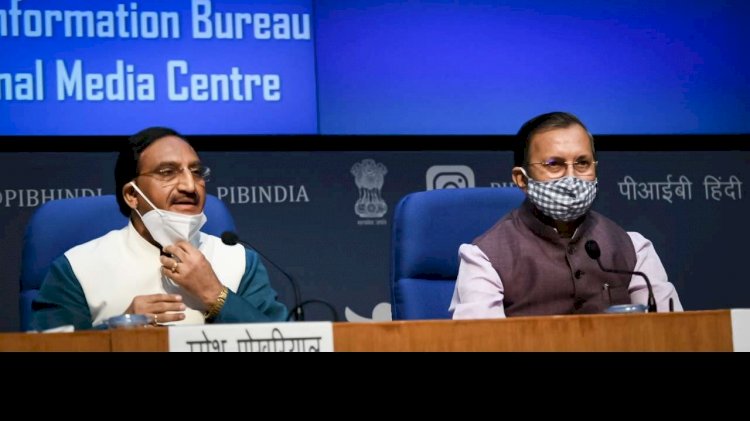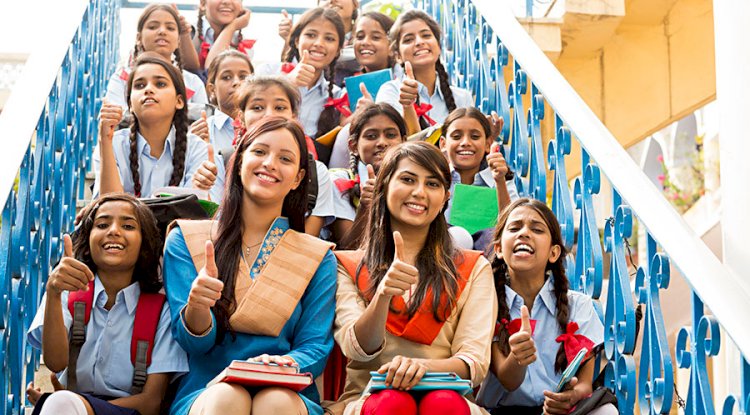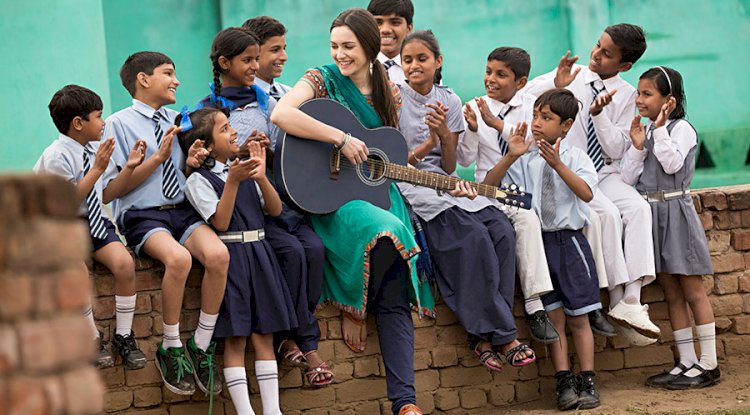A major Transformation of Indian Education System: National Education Policy 2020: All The Highlights You Want To Know
On Wednesday, the Union Cabinet approved the New Education Policy (NEP) and updated the name of the Ministry of Human Resources and Development as the Ministry of Education. There would be a single regulator for all higher education institutions and MPhil would be discontinued.
By Kalash

Union Minister for Information and Broadcasting Prakash Javadekar and Human Resource Development minister, Ramesh Pokhriyal, made the announcement on the NEP 2020 on July 29,2020. The decision of changing the name of the HRD ministry was done as per the recommendations listed in the drafts on the new education policy, which suggested it bring the focus back to the education system.
Higher Education Secretary Amit Khare said that “as on date, we have different norms for deemed universities, central universities, for different individual standalone institutions. New Education Policy says that for the reason of quality, norms will be the same for all & not as per ownership”.
History of NEP
The committee was headed by former ISRO chief K Kasturirangan. The NEP was drafted in 1986 and updated in 1992. The NEP was part of the election manifesto of the Bhartiya Janta Party (BJP) ahead of the 2014 elections. NEP draft was presented in 2019 where it received appreciation as well as strong criticism. The suggestions for making Hindi one of the compulsory languages was soon shot down by many. The draft was then put in public domain and suggestions invited from the people and stakeholders regarding the policy. After receiving lakhs of suggestions, the NEP draft was accordingly modified.
All institutions to be audited as ‘not for profit’ entities

There will be transparent public disclosure of all the financial matters with recourse to grievance-handling mechanisms to the general public.
What is Lok Vidya – It is important vocational knowledge developed in India, will be made accessible to students through integration into vocational education courses.
Vocational courses to be part of mainstream courses – Vocational education will be integrated into all schools and higher education institutions in a phased manner over the next decade.
What is an academic bank of credit – An Academic Bank of Credit (ABC) shall be established which would digitally store the academic credits earned from various recognized HEIs so that the degrees from an HEI can be awarded taking into account credits earned.
Changes In The curriculum – Imaginative and flexible curricular structure will enable creative combinations of disciplines for study a would offer multiple entries and exit points.
What do multiple exit options in degree mean – After completing one year, a student will get a certificate in a discipline or field including vocational and professional areas, a diploma if a student leaves after two years of study, a bachelor degree after a 3-year program. The 4-year multidisciplinary bachelor’s program shall be the preferred option.
Higher education institutes to be divided into further categories – Research-Intensive Universities and Autonomous Degree-Granting College.
By 2030, one large multidisciplinary college in every district - By 2040, all higher education institutions (HEIs) shall aim to become multidisciplinary institutions, each of which will aim to have 3,000 or more students. There shall, by 2030, be at least one large multidisciplinary HEI in or near every district.
NEP to follow three-language formulae, Sanskrit to be mainstreamed - Sanskrit will be mainstreamed with strong offerings in school - including as one of the language options in the three-language formula - as well as in higher education.
Foreign universities to set-up campuses in India -Under the NEP the world’s top 100 foreign universities will be “facilitated” to operate in India through a new law. According to the HRD Ministry document, listing salient features of policy, “such (foreign) universities will be given special dispensation regarding regulatory, governance, and content norms on par with other autonomous institutions of India.”
IITs asked to take a holistic approach - Even engineering institutions, such as IITs, will move towards more holistic and multidisciplinary education with more arts and humanities. Students of arts and humanities will aim to learn more science and all will make an effort to incorporate more vocational subjects and soft skills.
Music, arts and literature to be taught in all colleges - Departments in Languages, Literature, Music, Philosophy, Indology, Art, Dance, Theatre, Education, Mathematics, Statistics, Pure and Applied Sciences, Sociology, Economics, Sports, Translation and Interpretation, etc. will be established and strengthened at all higher education institutes.

All institutes to be research institutes - By 2040, all higher education institutions (HEIs) shall aim to become multidisciplinary institutions, each of which will aim to have 3,000 or more students.
UG colleges to be more autonomous - Undergrad autonomy, academic, administrative, and financial autonomy will be given to colleges, on the basis of the status of their accreditation. India has over 45,000 affiliated colleges.
The single common entrance exam for all colleges - The common Entrance exam for all higher education institutes to be held by NTA. The exam will be optional and not mandatory.
Report card to have an assessment by the teacher, peers - Life skills to be taught every year. Report card to have reviewed from teachers, peers, and students as well. Review assessment of performance. AI-based assessment of each year to be given to the student.
What's Your Reaction?



















